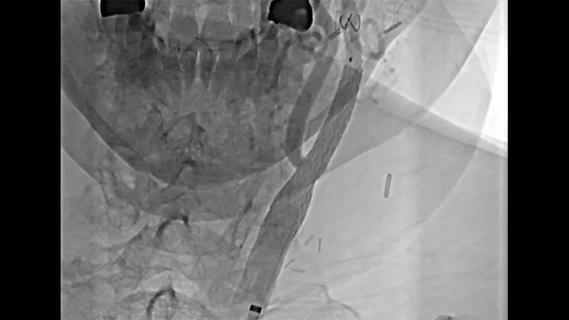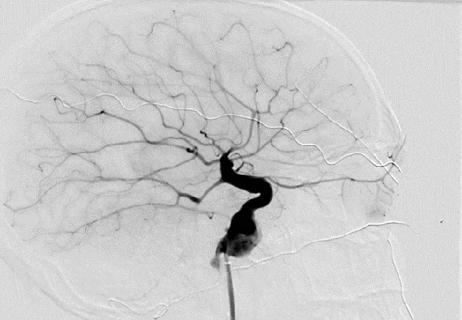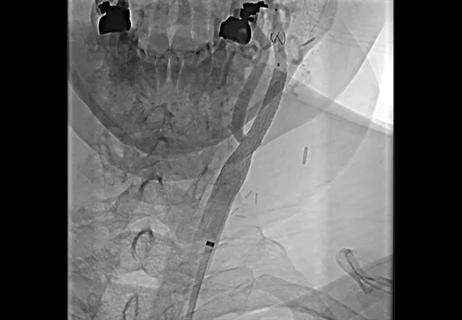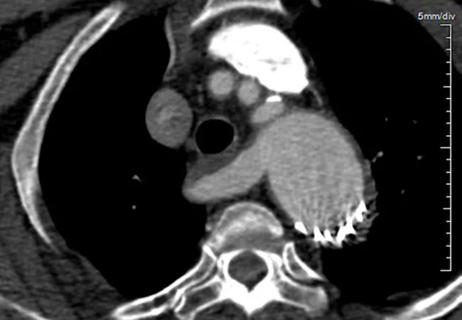Patient-level meta-analysis of ILLUMENATE trials finds no increased mortality with Stellarex DCB

A systematic meta-analysis using patient-level data shows comparable all-cause mortality through four years between the Stellarex DCB paclitaxel-coated balloon and percutaneous transluminal angioplasty for treatment of peripheral artery disease (PAD).
Cleveland Clinic is a non-profit academic medical center. Advertising on our site helps support our mission. We do not endorse non-Cleveland Clinic products or services. Policy
The findings, published online in the Journal of Vascular Surgery, bolster the case for long-term safety of this paclitaxel-coated balloon in the treatment of PAD.
Endovascular therapy is the mainstay of treatment for patients with symptomatic PAD, which most commonly affects the superficial femoral artery and popliteal arteries. Percutaneous transluminal angioplasty (PTA) produces good short-term outcomes in this setting but has been associated with 12-month restenosis rates of nearly 50% in some reports.
Efforts to avoid restenosis led to the development of several devices that deliver the anti-restenotic drug paclitaxel via drug-coated balloons (DCBs) or drug-eluting stents. Multiple studies have shown these devices to consistently yield better patency and less need for target lesion revascularization compared with PTA.
Despite consistent evidence of early efficacy and safety of paclitaxel-coated devices in clinical trials, a meta-analysis published by Katsanos and colleagues in December 2018 suggested an increased mortality signal. These researchers pooled summary-level data from 28 randomized controlled trials of paclitaxel-coated balloons and stents for treating femoropopliteal PAD. They reported a significantly increased rate of all-cause death at two and five years in claudicants receiving paclitaxel-coated devices relative to controls, as well as a potential dose-related signal.
These findings prompted controversy, in view of the lack of a suggested plausible mechanism of harm and the fact that a large share of patients — up to 30% — had been lost to follow-up, as the studies were not designed to assess long-term mortality. A subsequent meta-analysis (Circulation. 2020;141:1859-1869) was conducted that used individual patient-level data and captured more of the patients lost to follow-up. It showed a smaller increase in mortality with the paclitaxel-coated devices relative to the summary-level meta-analysis, and did not validate the dose-response relationship between paclitaxel dose and mortality risk detected by Katsanos and colleagues.
Subsequent publications of outcomes data from reviews of a German insurance claims database (Eur J Vasc Endovasc Surg. 2020;59[4]:587-596) and a Medicare database (JAMA Intern Med. 2021;181[8]:1071-1080) have not shown an increased mortality risk with paclitaxel-coated devices. Moreover, data from randomized patients in the VOYAGER PAD trial (J Am Coll Cardiol. 2021;78[18]:1768-1778) showed no increased mortality risk with these devices.
“We have seen no evidence from randomized clinical trials or from insurance or Medicare databases to support the conclusions of the initial summary-level meta-analysis suggesting an increased mortality risk with use of paclitaxel-coated devices in the lower extremity,” says Sean Lyden, MD, Chair of Vascular Surgery at Cleveland Clinic.
“One piece of evidence we still lacked was late data from the ILLUMENATE trials,” he adds, referring to two large randomized trials of the Stellarex DCB paclitaxel-coated balloon.
These trials are specifically known as the ILLUMENATE Pivotal Trial, conducted in the U.S. and Europe, and the ILLUMENATE EU RCT, conducted solely in Europe. Dr. Lyden is national principal investigator of ILLUMENATE Pivotal.
Both trials are prospective, multicenter, single-blind investigations that randomized patients to the Stellarex DCB coated with paclitaxel 2 µg/mm2 or to standard balloon PTA. All patients had either de novo or restenotic Rutherford class 2-4 lesions in the superficial femoral and/or popliteal arteries.
To supply the late outcomes data Dr. Lyden referred to, he and co-investigators continue to monitor outcomes of these two ILLUMENATE trials. Four-year data are now available, with those from ILLUMENATE Pivotal recently published online in the Journal of Endovascular Therapy, and those from the ILLUMENATE EU RCT presented at the 2020 Vascular InterVentional Advances (VIVA) meeting.
These latest outcomes from the two trials were combined in the recently published systematic meta-analysis in Journal of Vascular Surgery. The analysis was performed by an independent third party that pooled homogenous patient-level data and cause-specific adjudicated deaths through four years of follow-up from the index procedure. The outcome assessed was time to death, with Kaplan-Meier analysis used to estimate all-cause mortality.
The pooled analysis included 589 patients, of whom 419 were treated with the Stellarex DCB and 170 with PTA. Median follow-up was 4.75 years and was slightly longer in the DCB group. Overall, 401 patients completed four-year follow-up (292 in the DCB group and 109 in the PTA group). Vital status compliance was >95% in each of the two pooled randomized trials.
Total deaths through four years were 58 of 419 in the DCB group (13.8%) versus 23 of 170 in the PTA group (13.5%). Kaplan-Meier estimates of all-cause mortality did not differ significantly between the groups (P = 0.864) and shifted toward slightly favoring the DCB group in absolute terms over time, as follows:
Multivariate analysis showed that significant predictors of mortality at four years included greater age, renal insufficiency and lesion length but did not include paclitaxel exposure or paclitaxel dose.
“These findings of similar four-year mortality rates in the DCB and PTA arms reinforce the long-term safety profile of the Stellarex DCB,” observes Dr. Lyden, first author of the new meta-analysis. “The absence of an association between paclitaxel and late mortality in this analysis of two concordant ILLUMENATE trials is consistent with meta-analyses of other FDA-approved DCBs using patient-level data and with several large, real-world datasets.”
“These results are very reassuring for physicians and patients when discussing safe and effective treatment options for peripheral artery disease,” says Jai Khatri, MD, a cardiologist with appointments in Cleveland Clinic’s Section of Invasive and Interventional Cardiology and Section of Vascular Medicine. “Furthermore, this analysis offers a cautionary tale about the potential limitations in drawing conclusions about patient outcomes using summary-level pooled data rather than patient-level data.”
Patient follow-up in the two ILLUMENATE trials will continue through five years.

Insights from the Cleveland Clinic experience and a multispecialty alliance

Larger data set confirms safety, efficacy and durability for SFA lesions over 20 cm

Cleveland Clinic findings prompt efforts for broad data pooling

Benefits of new FDA safety determination go beyond expanding patients’ options

Technique features heavyweight guidewire and electrocautery to access the aortic sac

A look at where TCAR and transfemoral carotid stenting are likely headed

JACC review calls for CMS to update coverage decision

Cleveland Clinic experience points to a symptoms- and complications-based approach